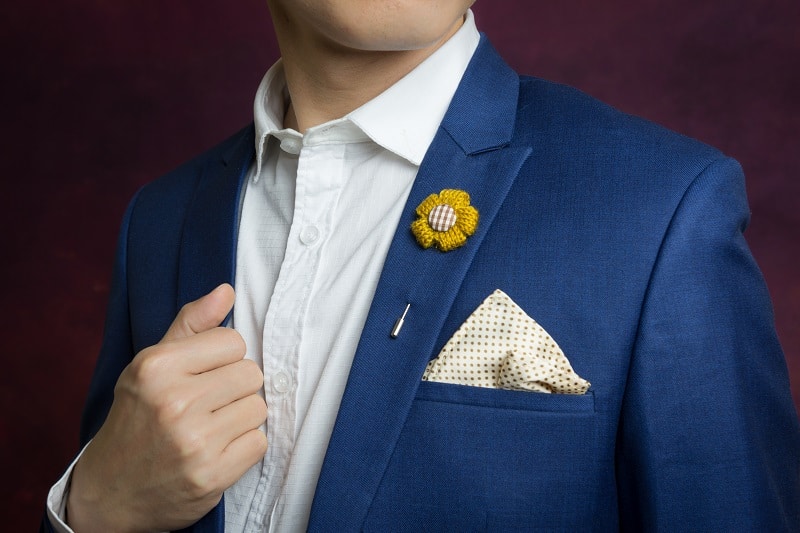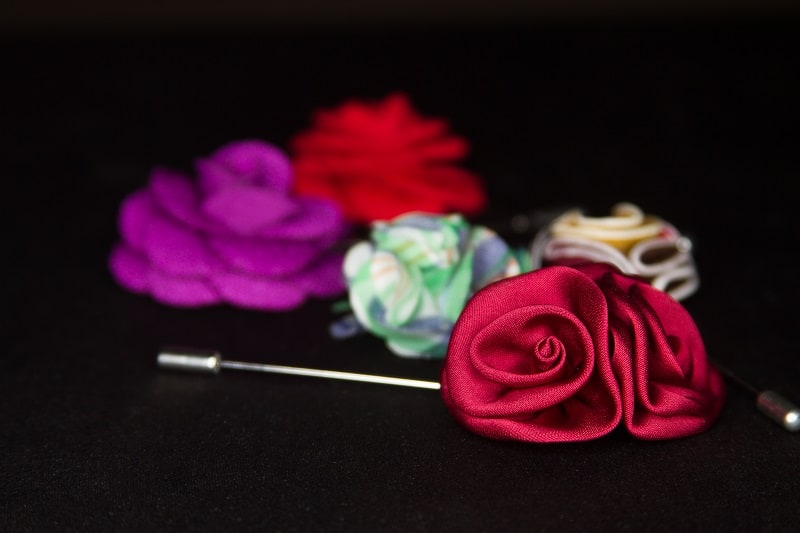
Lapel Flower for Men: Everything You Need To Know
The lapel flower has been around for many years yet few know anything related to the early history of this fashion accessory that has long been a popular “go-to” item for men of all ages. Perhaps you recognize the lapel flower by its more common designation as a “Boutonniere”. No matter which of the terms is being used it still refers to a decorative flower that is worn on the lapel of a man’s suit.
Typically one would expect to see lapel flowers in particular settings. When participating in a wedding, a formal event, a funeral procession or a formal dance the boutonniere is almost a certainty to put in an appearance. For some these same uses have conferred an unfair reputation upon these flowers.
It is not uncommon to have people refer to a lapel flower as stodgy, stuffy or pretentious. Sure, these fashion accessories are usually reserved for use in more formal settings but does this make lapel flowers “dull” and “old-fashioned”?
Modern day fashions and the increasing interest in expanding a gentleman’s style choices have opened the doors to a resurgence in items such as tie clips, cuff links, handkerchiefs and lapel flowers. Classic styles are rapidly becoming popular among the younger generation as they look to create a blend of traditional dress and modern trends.
As is true with any singular item in the fashion world what is new becomes old and what was once old will once again become new. The constant recycling of styles ensures that the lapel flower will never truly be completely out of style.
As you trace the historical roots of lapel flowers, it is obvious that flowers and greenery were the favorite choices to integrate into celebratory events or to use for decorative purposes. More than 4000 years ago people were demonstrating allegiance and loyalty with floral displays. Many flowers were considered lucky, and people believed that wearing certain flowers would protect them against evil, disease and disaster.
One legend states that England’s War of the Roses brought lapel flowers onto the battlefield for the very first time. Sides were distinguished by the wearing of either a white or red rose. It was essentially the only way to identify friend from foe.
A widely accepted story of the flower and the lapel dates back to the wedding portraits of Queen Victoria and Prince Albert. When the photographer created the wedding pictures, the Queen wanted to show a loving gesture to her new husband. She gave him flowers. Her besotted prince slashed his coat lapel to create an opening in the fabric. Then he placed a flower (from his wife) into the opening and the photo captured this image permanently. Many men wanted to take a page from Prince Albert’s fashion book, and they began to display flowers in their lapels.
At the time in which Queen Victoria and Prince Albert held court the lapel flower was considered to be one of the most attractive fashion accouterments. If a gentleman hoped to portray himself as dashing and dapper, then a flower in the lapel was a requisite.
If your coat lapel is not designed to accommodate an actual lapel flower you can pin a flower onto the fabric. If it is fastened correctly, few will notice that your boutonniere is just attached to the exterior surface of the lapel.
While many wearers do prefer a fresh flower, there is no rule that says this is the only choice for your lapel. Indeed, you can now find some creative lapel accessories that stretch the definition of a flower far beyond standard limits. The primary goal is to have a decorative lapel accessory that denotes your personal sense of style.
You do want to avoid flowers that are too large, too small, wilted or floppy. None of these selections would be good choices. Droopy, wilted boutonnieres detract from your clothing and will make you look sloppy and unkempt. Even a tailored Italian suit would be diminished by pairing it with a faded boutonniere.
The lapel for a man’s suit coat is generally designed with a buttonhole that lies on the chest. Its the site reserved to hold a lapel flower. You cannot mistake this design feature because it is only found on one side of the coat. Traditionally the buttonhole is located on the left lapel. The left side of the coat is significant because the lapel flower will be positioned over the heart.
If you have a well-tailored suit coat, then this buttonhole will also have a tiny fastener stitched in place underneath the lapel. This fastener is intended to hold securely the stem of the lapel flower and prevent it from sliding or falling.
For years, the boutonniere has been a favorite fashion staple, particularly in European countries. During the early years of the 20th century, you would see men proudly displaying lapel flowers on a daily basis. Fresh flowers would be substituted on a regular basis, and sometimes more often than that. Sporting an unblemished flower in the lapel was something in which men took great pride.

By the time, the 50’s decade had arrived the use of lapel flowers was on a definite downswing. Celebrities were often wearing these as accessories but for most men the lapel flower was quickly being relegated to an item that was restricted to special formal events.
The preferred floral choices for use as a boutonniere include baby roses and carnations. Another popular flower selection includes the colorful bachelor’s buttons. Any of these flowers would make perfect accessories to decorate a man’s coat lapel.
The use of a lapel pin is associated with sophisticated fashion and is appropriate for so many different events and gatherings. It is an easy way to raise the stakes and show that you have brought your A game to the style table. Today the trend is to use more variety in the possible choices. You will discover carefully crafted flowers that are created from man-made materials. These can be enjoyed for quite a long time while still appearing to be new and fresh.
